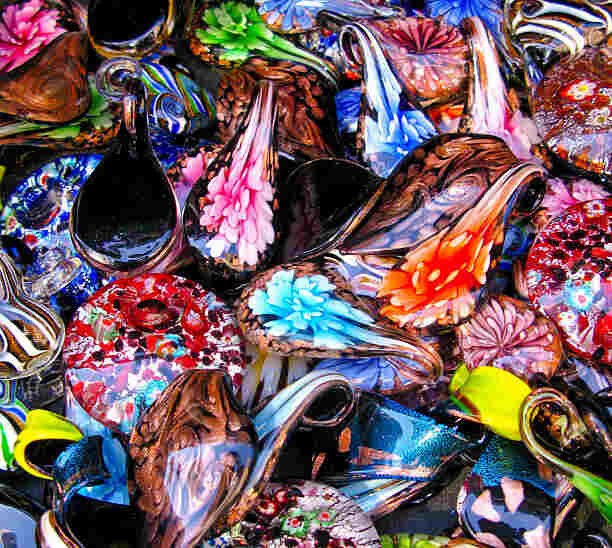Sea Turtle Life Cycle: A Captivating Journey
Did you know that 80% of sea turtle species are threatened or endangered? This shows how urgent it is to learn about and protect these amazing creatures. We’ll look into the sea turtle life cycle, seeing their unique traits and challenges from egg to adult. Their life cycle is complex and fascinating, captivating us for centuries.
Exploring the sea turtle life cycle teaches us why we must save these incredible animals and their homes. By studying their life cycle, we appreciate how our planet’s ecosystems are connected. We also see how human actions affect marine life. Knowing about the sea turtle life cycle is key to saving our planet’s biodiversity.
Understanding the Remarkable World of Sea Turtles
Sea turtles are fascinating, with unique traits and adaptations to marine life. They’ve been on Earth for over 100 million years, keeping our oceans healthy. Each species has its own life cycle, showing different traits and behaviors.
Let’s explore the diversity, global spread, and evolution of sea turtles:
Species Diversity in Marine Ecosystems
There are seven sea turtle species, each with its own habits. These include:
- Leatherback sea turtle
- Green sea turtle
- Kemp’s ridley sea turtle
- Oliver ridley sea turtle
- Loggerhead sea turtle
- Hawksbill sea turtle
- Flatback sea turtle
Global Distribution Patterns
Sea turtles live in all the world’s oceans. They go from warm tropical waters to cold temperate zones. Their places depend on food, water temperature, and where they nest.
Evolutionary History
Sea turtles have a long, complex history. Fossils show they’ve stayed mostly the same for millions of years. Learning about their life cycle helps us appreciate these amazing animals and their role in our ecosystem.
The Complete Sea Turtle Life Cycle
The life cycle of sea turtles is complex and fascinating. It includes nesting, hatching, growing up, migrating, and reproducing. Knowing about these stages is key to saving these amazing animals.
It starts with nesting, where females lay eggs on beaches. After incubation, the eggs hatch, and the young ones emerge. They then head to the ocean to begin their growth.
As they grow, they move to new places. Eventually, they reach adulthood and start the cycle again.
- Nesting: Female sea turtles lay their eggs on beaches, which is a critical stage in the life cycle of sea turtle.
- Hatching: The eggs hatch, and the hatchlings emerge, starting their journey to the ocean.
- Juvenile development: The hatchlings grow and develop in the ocean, eventually reaching maturity.
- Migration: Sea turtles migrate to different locations, which is an essential part of their life cycle.
- Reproduction: Adult sea turtles reach reproductive maturity, starting the cycle again.
Understanding the life cycle of sea turtles helps us see why we must protect them. It shows us the importance of conservation efforts.
From Sand to Sea: The Nesting Process
Sea turtles have a vital nesting process for their survival. We’ll look at how they choose nesting sites, lay eggs, and incubate them. These steps are key to their nesting success.
Female turtles pick nesting sites based on sand temperature and moisture. They lay about 100 eggs per nest at night. Most females nest several times in a breeding season.
Nesting Site Selection
Choosing the right nesting site is essential. Female turtles often return to where they were born. This increases the chances of their eggs surviving.
Egg-Laying Behavior
Females dig a nest and lay their eggs, covering them with sand. This protects the eggs from predators and keeps them warm. The number of eggs and how often they nest varies by species.
Incubation Period
The incubation period lasts about 45-70 days. It’s when the hatchlings’ sex is determined by sand temperature. This period faces threats like predation and erosion.
Hatchling Emergence and the Race to the Ocean
As the sea turtle nesting season ends, a new batch of hatchlings starts their journey. This journey is full of dangers as they move from the sand to the sea. They face many obstacles on their way to the ocean’s safety.
Female sea turtles lay their eggs on land during the nesting season. After 45-70 days, the hatchlings emerge. They dig their way out, guided by the nest’s warmth and humidity. Once out, they are at risk from predators and must follow their instincts to reach the ocean.
Some of the key challenges that hatchlings face during their journey to the sea include:
- Predation by crabs, birds, and other animals
- Disorientation due to artificial lighting and other human activities
- Obstacles such as debris, rocks, and other barriers
Despite these dangers, many hatchlings reach the ocean. There, they start their life as juvenile sea turtles. The sea turtle nesting season is vital for these creatures. It’s important we protect their habitats to ensure their survival.
| Stage | Description | Duration |
|---|---|---|
| Hatchling Emergence | Hatchlings emerge from their nests and start their journey to the sea | 1-3 days |
| Juvenile Development | Hatchlings develop into juvenile sea turtles and start to feed and grow | 1-5 years |
| Sub-Adult Stage | Juvenile sea turtles reach sub-adult stage and continue to grow and mature | 5-10 years |
Juvenile Development in Ocean Environments
Exploring the green sea turtle life cycle, we see a key stage: the juvenile years. This is a time of fast growth and learning. Young sea turtles must find food and avoid dangers in the vast ocean. We’ll look at how they grow, eat, and choose where to live.
The life of a green sea turtle is divided into stages, each with its own traits. Young turtles go through big changes as they get used to the ocean. They mainly eat seaweed and seagrass, which helps them grow.
- Early growth stages: Juvenile sea turtles grow quickly, getting bigger and stronger to move around better.
- Feeding patterns: They learn to eat specific types of seaweed and seagrass to stay fed.
- Habitat selection: Young turtles find the right places to live, like coral reefs or estuaries, for safety and food.
Knowing about the green sea turtle life cycle, and the juvenile stage, helps us protect them. By understanding their struggles, we can help make their world better. This ensures these amazing creatures can thrive for years to come.
Migration Patterns and Navigation Methods
Sea turtles migrate across vast oceans, a journey we find amazing. Their migration patterns show how vital these trips are for their lives. They use magnetic fields, ocean currents, and other cues to find their way.
Several factors guide sea turtles during their migration:
- Food availability: They seek areas rich in food, like coral reefs or coastal waters.
- Breeding and nesting: They travel to specific beaches to breed and nest, often to the same spot where they were born.
- Climate and temperature: They move to places with the right water temperatures and climate for their growth and survival.
Knowing about sea turtle migration helps us protect them. It shows us where to focus conservation efforts. Studying how they navigate also helps us understand how human actions affect them.
Learning more about sea turtle migration reminds us of their importance. We must protect these incredible creatures and their homes. Supporting conservation and reducing our ocean impact can help sea turtles thrive for generations to come.
Adult Life and Reproductive Maturity
Adult sea turtles have reached the top of their development. They have unique physical traits that differ from young ones. Their shells protect them from predators, and their flippers are strong for swimming.
The sea turtle life cycle is complex and interesting. Knowing about the adult stage helps us understand their whole journey. Adult sea turtles are key to their ecosystem and are vital for their species’ survival. We’ll look at their physical traits and mating behaviors, including courtship and finding a mate in the ocean.
Physical Characteristics
Adult sea turtles vary in size and weight, depending on the species. They can weigh from a few pounds to over 1,000 pounds. Their shells, made of bony plates called scutes, protect them and help them stay afloat.
Mating Behaviors
Adult sea turtles have unique mating rituals. These include dances, sounds, and even giving gifts. For example, males give females seaweed to win their favor. Finding a mate in the vast ocean is a big challenge for them.
Understanding adult sea turtles is key to appreciating their life cycle. By studying their traits and mating behaviors, we learn more about these amazing creatures. This knowledge helps us see why we must protect them.
Threats to Sea Turtle Survival
Sea turtles face many dangers from the start of their lives to adulthood. These threats can harm their numbers and health. It’s vital to focus on saving them through conservation.
Some major threats include:
- Natural predators like crabs, birds, and sharks that eat sea turtle eggs and young
- Human actions like pollution, destroying habitats, and getting caught in fishing gear
- Climate change affects their nesting sites, food, and migration paths
By understanding and tackling these threats, we can protect sea turtles and our oceans.
| Threat | Impact on Sea Turtles | Conservation Efforts |
|---|---|---|
| Natural Predators | Egg and hatchling predation | Protected nesting sites, predator control measures |
| Human Impact | Pollution, habitat destruction, bycatch | Sustainable fishing practices, marine protected areas, pollution reduction |
| Climate Change | Nesting beach erosion, food source disruption, migration pattern changes | Climate change mitigation, sea turtle-friendly coastal development, research and monitoring |
Conservation Efforts and Success Stories
We are dedicated to saving sea turtles. Our work is helping these amazing creatures. We protect nests, change fishing gear, and restore habitats to keep sea turtles safe.
One big success is using turtle-excluding devices in fishing nets. These devices cut bycatch by up to 90%. We also work with local communities to create protected areas and support eco-friendly tourism.
We also teach people why sea turtles need our help. By joining forces, we can truly help sea turtles and their homes.
Here are some great examples of sea turtle conservation success:
- The Sea Turtle Conservancy’s nest protection program has boosted nesting success by up to 50%.
- The Marine Conservation Institute has set up marine protected areas. These areas are safe for sea turtles to live, feed, and nest.
- The World Wildlife Fund is fighting plastic pollution. This is a big danger to sea turtles and other sea creatures.
These stories show how teamwork can make a big difference. They motivate us to keep working for a world where sea turtles can flourish.
| Organization | Project | Goal |
|---|---|---|
| Sea Turtle Conservancy | Nest Protection Program | Increase nesting success rates |
| Marine Conservation Institute | Marine Protected Areas | Establish safe havens for sea turtles |
| World Wildlife Fund | Reduce Plastic Pollution | Protect sea turtles from plastic pollution |
The Role of Technology in Tracking Sea Turtles
Technology is key in learning about sea turtle migrations. With satellite tracking, researchers can follow turtles over long distances. This gives us important data on their travels and habits. It helps us protect these amazing animals.
Some important technologies for tracking sea turtles include:
- Satellite tracking systems: These systems use satellites to track the movement of turtles, providing data on their location, speed, and direction.
- DNA studies: By analyzing the DNA of sea turtles, researchers can learn more about their genetic diversity and population structure, which is essential in understanding sea turtle migration patterns.
- Population monitoring: This involves tracking the number of turtles in a given area, as well as their age, sex, and other demographic characteristics.
These technologies help us understand sea turtle migrations. For instance, satellite tracking shows turtles travel thousands of miles. This helps us find and protect their migration paths.
Technology has changed how we see sea turtles and their migrations. By keeping up with these advancements, we can better protect these incredible creatures.
| Technology | Description |
|---|---|
| Satellite Tracking | Uses satellites to track turtle movement |
| DNA Studies | Analyzes turtle DNA to understand genetic diversity |
| Population Monitoring | Tracks turtle population size, age, and sex |
In Conclusion: Ensuring a Future for Sea Turtles
Reflecting on the sea turtle life cycle, we see a delicate balance. Each stage, from hatchlings to migratory adults, is vital. Yet, threats like predators and human activities, along with climate change, are big challenges.
But, we’re hopeful thanks to conservation successes worldwide. Learning about the sea turtle life cycle helps us protect them. Research and teamwork are key to their survival.
We’re optimistic about the future of sea turtle conservation. We can build on past successes. By spreading awareness and supporting conservation, we all can help. Together, we can ensure these ancient creatures thrive for years to come.
FAQ For Sea Turtle Life Cycle
Q1. What is the life cycle of a sea turtle?
Ans: Sea turtles go through many stages, from nesting to reproduction. We’ll look at each stage to understand these amazing creatures better.
Q2. How do sea turtles choose their nesting sites?
Ans: Female sea turtles pick their nesting sites carefully. They look at the beach’s characteristics and how easy it is to get to the ocean. They often go back to where they were born to lay their eggs.
Q3. What happens during the incubation period of sea turtle eggs?
Ans: The incubation period is very important. The nest’s temperature decides if the hatchlings are male or female. It can last from 45 to 70 days, depending on the species and the environment.
Q4. How do sea turtle hatchlings make their way to the ocean?
Ans: Hatchlings face a tough journey from the nest to the ocean. They use their instincts and what they see to avoid dangers and reach the water. This is a critical part of their life cycle.
Q5. How do juvenile sea turtles grow and develop?
Ans: Young sea turtles grow fast. They choose places with lots of food and safety, like shallow coastal areas. As they get older, their eating habits and where they live may change.
Q6. How do sea turtles migrate and navigate vast distances?
Ans: Sea turtles are great navigators. They use magnetic fields, ocean currents, and other cues to migrate. They can travel thousands of miles, showing their incredible ability to find their way.
Q7. What threats do sea turtles face throughout their life cycle?
Ans: Sea turtles face many dangers, including natural predators and human activities. Pollution, habitat loss, and getting caught in fishing gear are big threats. Climate change also affects their nesting beaches and food sources.
Q8. How can we help conserve sea turtles?
Ans: We can help by supporting conservation efforts. Nest protection, changing fishing gear, and restoring habitats are important. New technologies like satellite tracking help us understand sea turtles better. By supporting these efforts, we can help ensure their survival.












